
Published by Redleaf Press
10 Yorkton Court
St. Paul, MN 55117
www.redleafpress.org
2013 by Judith Anne Rice
All rights reserved. Unless otherwise noted on a specific page, no portion of this publication may be reproduced or transmitted in any form or by any means, electronic or mechanical, including photocopying, recording, or capturing on any information storage and retrieval system, without permission in writing from the publisher, except by a reviewer, who may quote brief passages in a critical article or review to be printed in a magazine or newspaper, or electronically transmitted on radio, television, or the Internet.
First edition published 1995. Second edition 2013.
Cover design by Jim Handrigan
Cover photograph by Veer/Diego Cervo
Interior design by Erin Kirk New
Typeset in Berkeley Oldstyle Medium and Franklin Gothic Book
Illustrations by Becky Radtke
Library of Congress Cataloging-in-Publication Data
Rice, Judith, 1953
The kindness curriculum : stop bullying before it starts / Judith Anne Rice.Second Edition.
pages cm
Summary: Use this comprehensive framework and developmentally appropriate activities to teach young children compassion, conflict resolution, respect, and other positive, pro-social values as you cultivate a peaceful and supportive learning environment for all children.Provided by publisher.
Includes bibliographical references.
ISBN 978-1-60554-256-0 (e-book)
1. Moral education (Early childhood) 2. Social valuesStudy and teaching (Early childhood) 3. Early childhood educationActivity programs. I. Title.
LB1139.35.M67R53 2013
370.114dc23
2012039886

In memory of Colin Jay Petersen, a loving child August 23, 1985 to September 29, 1999
Kindness is the golden chain by which society is bound together.
Goethe
 Contents
ContentsI am grateful to Redleaf Press and especially to Jan Zita Grover.
To the Eller girls, Lorraine and Elaine, I am continuously thankful for my most cherished life lessons. They dont make them like you two anymore.
Parents want their children to be happy. Can we teach happy? Yes, because happiness comes from compassion for others and contentment within ourselves, and those values are what the activities in this book help develop.
This book is intended for family child care settings, child care centers, the home, Head Start programs, preschools, hospitals, homeless shelters, and anywhere young children are being cared for.
Young children learn from the repetition of concrete experience. The fun activities in this book help them develop compassion for others by practicing simple, powerful lessons that incrementally foster love, feelings and empathy, gentleness, self-control, respect, friendship, and conflict resolution.
Organization of the Book
Each of the first eight chapters of The Kindness Curriculum involves a building block of character development. These chapters contain activities that are new or revised since the first edition.
The , Creating Calm, sets the stage for prosocial play. Calm children are better able to choose positive behavior than are stressed-out ones, who may feel out of control. Activities in this chapter help children feel calm and choose kindness. The next four chapters deal with the fundamental values of love, feelings and empathy, gentleness, and respect. In these chapters, children are introduced to the concepts of unselfishness, understanding, and valuing themselves and others. The following three chapters, Self-Control, Friendship, and Conflict Resolution, provide experience in dealing with others in constructive and enriching ways.
, Conflict Resolution, is designed to help prevent bullying before it starts. The goal here is to cut off potential bullying behaviors before they become entrenched and to build up resilience/resistance to hurtful behavior. With consistent and systematic repetition of the problem-solving activities in this chapter, you are likely to see a strong impact on the level of cooperation among the children. As a result, your learning environment will function more smoothly.
, children learn about the powerful technique of visualization, an effective tool for improving behavior, boosting learning skills, and fostering creativity.
The activities in each chapter are fun and easy to implement. You will find that children love them for the expression they allow and the playfulness they provide. As a group, the activities create an atmosphere of acceptance, empowerment, and love, encouraging children to seek out the goodness in themselves and each other. Many of the activities have their strongest impact when incorporated into daily routines instead of being used in a unit approach. For example, The Kindness Pledge, found in , can be recited at the beginning of each day.
Because parents are the most powerful force in childrens lives, it is important to encourage their participation in their childrens education. For this reason, I have included , and send them home with the children to be completed and returned.
At the end of the book are two useful appendixes and lists of recommended resources. The .) The second provides a number of common American Sign Language (ASL) signs that provide visual behavioral cues for children. The lists of recommended resources include childrens books, books for teachers, and websites that enhance the curriculum.
A Few Words about Bullying
In the years since the first edition of The Kindness Curriculum, bullying has gained prominence as a problem that the educational system must address. This new edition addresses bullying, with this qualification: I think it is unfair to think of preschoolers as bullies. At this age, children are experimenting with behaviors and must be guided in appropriate ways to deal with their emotions.
Preschool provides a window of opportunity for preventing or reducing the severity of later bullying behavior. Because the brains of young children are developing and their habits are forming in response to social interactions, modeling, and the environment, it is crucial that young children be exposed to loving values, which constitute the building blocks for positive character development. Activities that reinforce positive behavior can serve as preemptive strikes against bullying. It is the responsibility of adults to set clear and simple limits and then observe and work together with children when bullying behavior begins to surface.
Successful adult supervision must also include limiting childrens exposure to violent media. The American Psychological Association declares that viewing mass media violence leads to increases in aggressive attitudes, values, and behavior, particularly in children, and has a long-lasting effect on behavior and personality, including criminal behavior. So, if the values promoted in this book are to prevail, we must not let them be overwhelmed by the powerful influences of popular culture.
Next page

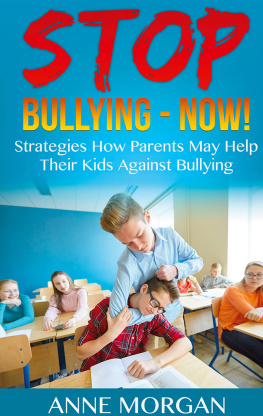

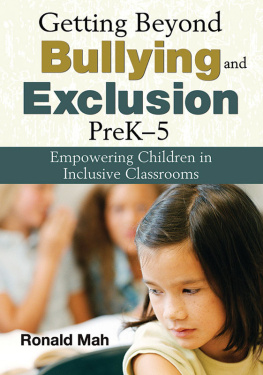
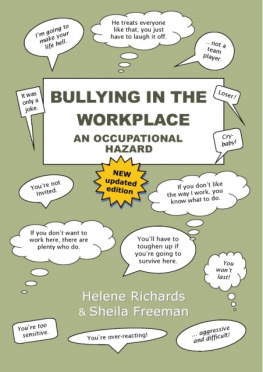

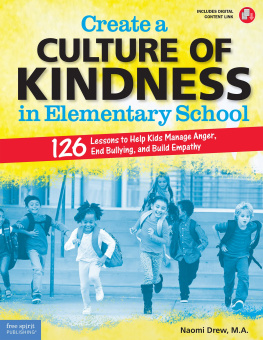
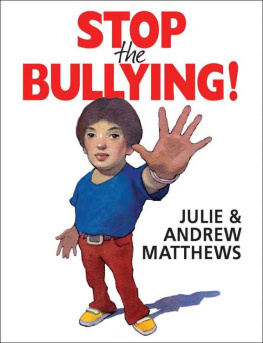


 Contents
Contents